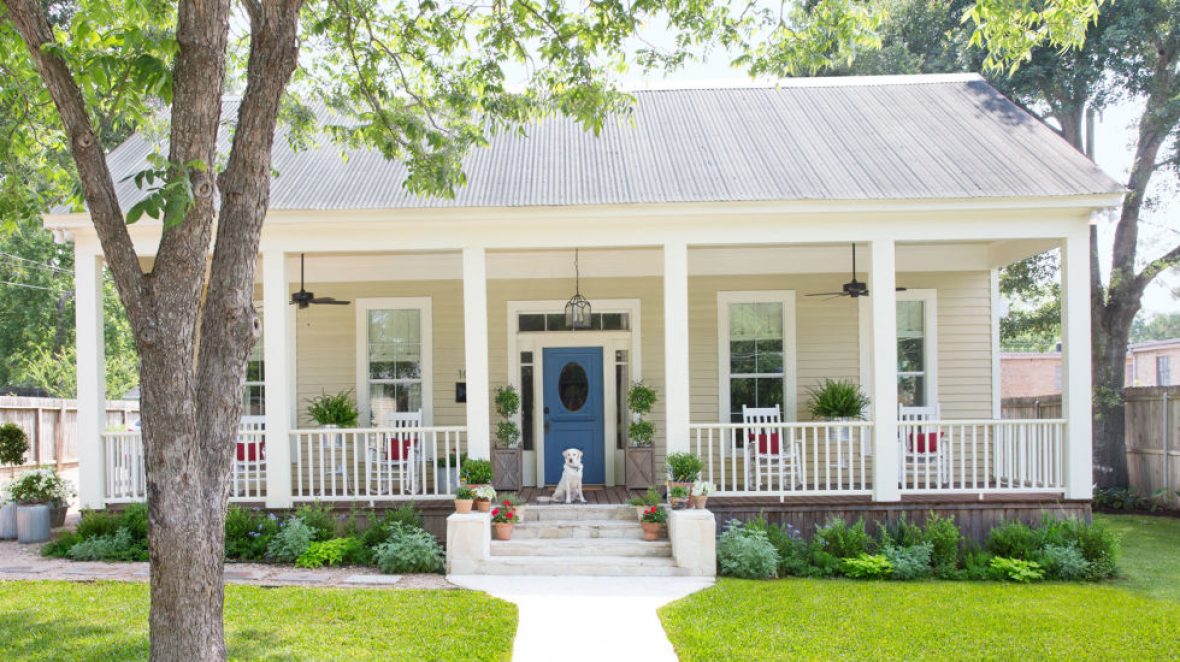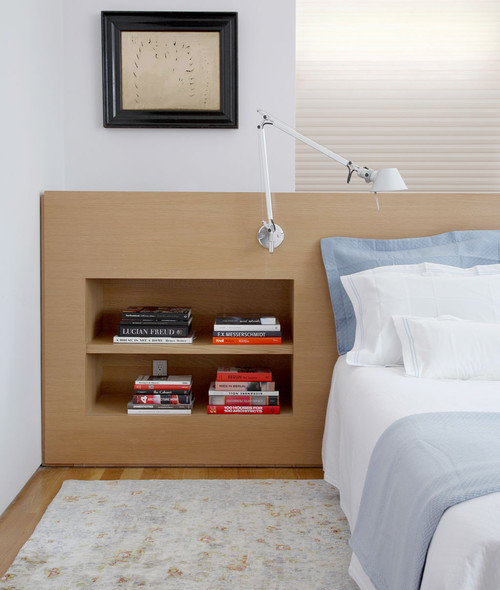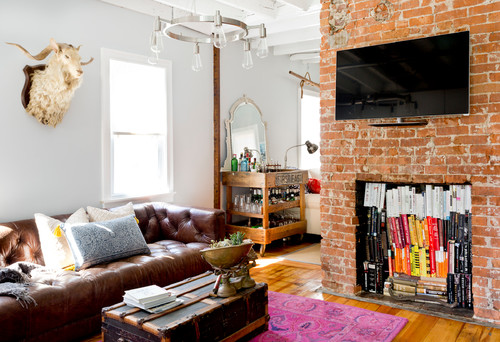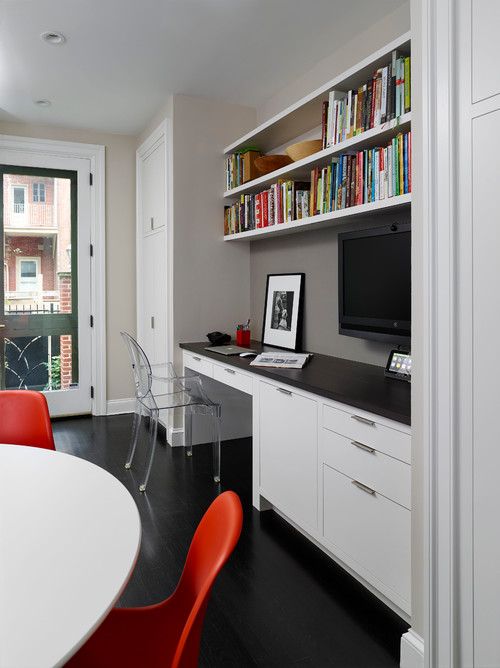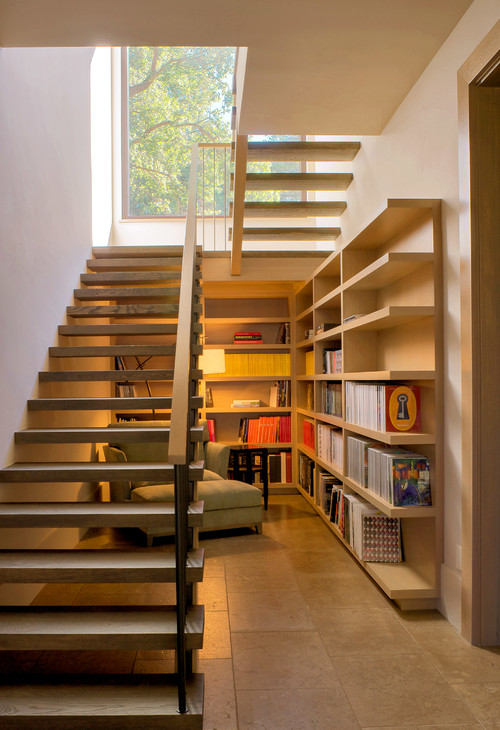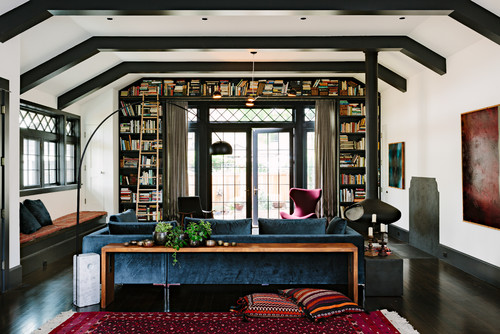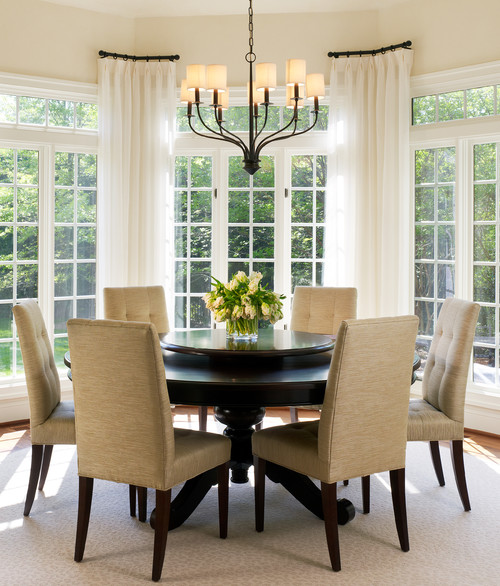
Here are 8 clever ways to store books around the house. Which one is your favorite?
Guest post by Michelle Lee, Houzz
Although reading books can seem like a long lost art in the days of digital devices, there still remains something special about the smell of a brand new novel and being able to flip through physical pages. For dedicated bookworms with cherished collections, it can be a struggle to store and display your favorites without a dedicated home library. Follow along for eight ways to stylishly integrate books into any room in the house.
In the Kitchen
This is not just limited to cookbooks. Any books you’ll want to read over a good meal or while waiting for the oven to preheat are just as applicable. There are many ways to add a homey vibe to your space by installing open shelves beneath a kitchen island or along a blank unused wall. Just make sure to keep the books away from appliances so the pages and binding don’t get damaged by heat.
In the Bedroom
As we venture further into fall and winter, many bookworms will want to curl up under the covers with a hot cup of cocoa and a new novel. Keep your reading list at arm’s reach by storing books along a windowsill or stack them up in a corner of the room. For a more permanent solution, buy a new headboard or nightstand with built-in storage.
In an Unused Fireplace
Fireplaces make a lovely focal point in many living rooms, but can be a hassle to maintain and use. You can breathe new life into this space by cleaning it thoroughly and stacking books in the empty space. The different bindings will create visual interest and bring color to the previously black abyss.
In the Bathroom
One of life’s luxuries is being able to read a good book in a relaxing bubble bath at the end of a long day. This can be done by building recessed shelves above a freestanding tub. For renters, there are plenty of budget-friendly over-the-toilet storage cabinets that accomplish the same purpose. Be sure to take proper precautions against warped pages caused by moisture with an exhaust fan.
Above a Desk
In many home offices, the space above the desk goes largely unused. Simply look up for more space. You can create a home for a decently sized collection of books by installing open shelves above your computer all the way up to the ceiling. The transitional Philadelphia space shown here illustrates the idea nicely.
Under the Stairs
If you still haven’t found the right fit for what to put in that little nook under the stairs, look no further. Bring in an asymmetrical or diagonal bookcase to house your collection or carve out an alcove to recreate a Harry Potter vibe. Bring in a comfy chair or cushions and you’ve got the perfect personal hideout space for the season.
Around an Entryway
This one requires the expertise of a skilled woodworker or architect. Frame any doorway in your home with a gorgeous collection of novels that surround it left, right and above. Add a rolling library ladder to reach the highest shelves and bring rustic charm and character to any space, as seen here.
In Your Front Yard
If you’re really unable to squeeze any more space out of your home to store books inside, consider moving outdoors for a unique solution. The Little Free Library is a nonprofit organization that seeks to bring communities together and share books with one another through a house-shaped box in their front yard. Fill it with a few of your favorites that you’re willing to share and encourage your neighbors to take one, leave one of their own or both. Although this is not quite a storage solution, it’s a great way to connect with your community and discover new reading material.
Related Links:
- Customize Storage With Shelves in Every Color and Style
- Add Track Lighting for Illuminated, Easy-to-Find Titles
- Learn More About the Little Free Library Project

